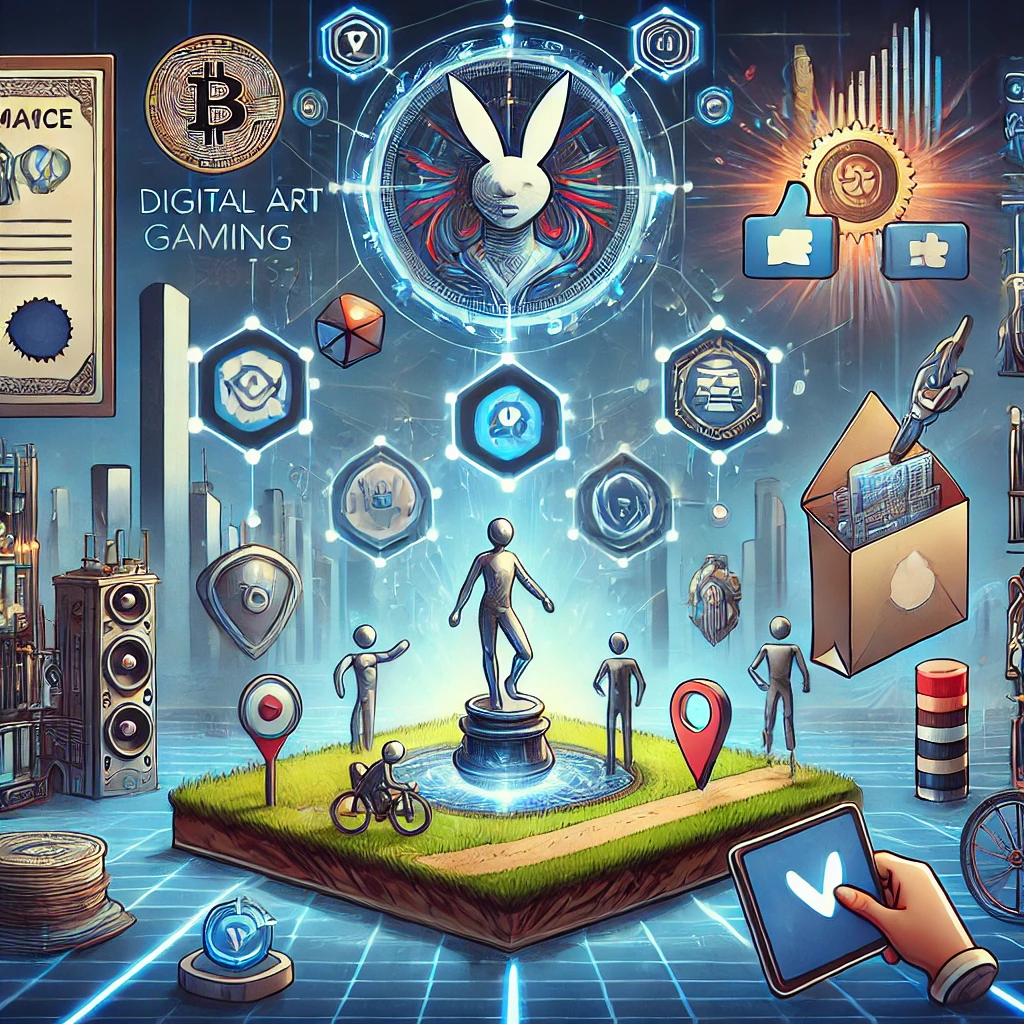Introduction
Non-fungible tokens (NFTs) have garnered significant attention in recent years, primarily associated with digital art and collectibles. However, NFTs are far more than just a medium for artists and collectors. At their core, NFTs are unique digital assets verified using blockchain technology, making them distinct from other fungible tokens like cryptocurrencies. Each NFT is indivisible and cannot be replicated, which creates a new realm of possibilities beyond art. In this blog, we’ll explore how NFTs are being applied in various sectors, debunk some common misconceptions, and discuss their future potential.

Diverse Applications of NFTs
While the early stages of NFT adoption centered around digital art, their use cases have expanded into many other areas:
- Art and Collectibles
The most well-known application of NFTs is in the digital art world. Artists have found NFTs to be an innovative way to sell their work directly to collectors without intermediaries. Each NFT associated with a piece of digital art provides proof of ownership and originality, solving issues of authenticity and scarcity that digital files typically face. Platforms like OpenSea and Foundation have allowed artists to reach global audiences, creating new economic opportunities for creators worldwide. - Gaming and Virtual Worlds
NFTs are revolutionizing the gaming industry by giving players true ownership of in-game assets. In traditional games, players spend money on virtual items like skins, weapons, or avatars, but these items are often locked within the game’s ecosystem. NFTs enable players to buy, sell, or trade these assets outside of the game, adding real-world value to virtual objects. Games like Axie Infinity and Decentraland leverage NFTs to allow players to own virtual land or characters, creating thriving marketplaces for virtual assets. - Identity and Certification
NFTs have enormous potential in identity verification and certification. For instance, educational institutions could issue degrees and certificates as NFTs, providing students with verifiable and tamper-proof credentials. This concept could extend to professional certifications, licenses, and even identity documentation, offering a more secure and decentralized way to verify personal information and achievements. As more organizations adopt blockchain, NFT-based certifications could become the new standard for verifying qualifications.
Growth Potential of the NFT Market
The NFT market has seen tremendous growth, and the future looks even brighter. Major platforms such as OpenSea and Rarible have become central hubs for NFT trading, supporting a diverse range of NFTs beyond art, including gaming assets, domain names, and virtual real estate. The rapid rise of these platforms highlights the increasing demand for NFTs in various sectors.
One of the reasons for this growth is the increasing adoption of blockchain technology by large corporations and mainstream audiences. As more people recognize the value of digital ownership and tokenized assets, the market is expected to expand. However, scalability and gas fees, particularly on the Ethereum network, remain challenges. The adoption of Ethereum 2.0 and layer-2 scaling solutions could further drive the market’s growth by reducing transaction costs and improving efficiency.
Legal and Regulatory Challenges of NFTs
As with any emerging technology, NFTs face legal and regulatory challenges. Intellectual property rights and copyright issues are among the most significant concerns in the NFT space. While NFTs can verify ownership of a digital asset, they do not inherently confer the rights to the underlying intellectual property unless explicitly stated in the terms of sale.
Moreover, NFTs raise questions about consumer protection, taxation, and money laundering, prompting regulators to pay closer attention to the industry. Ensuring compliance with evolving legal frameworks will be crucial for NFT platforms and creators to maintain trust and legitimacy in the market.
Future Outlook: NFTs Beyond Art
The future of NFTs lies in their potential to reshape industries far beyond art. In real estate, NFTs could be used to tokenize property, enabling fractional ownership and easier transfer of assets. Similarly, in the music industry, artists can use NFTs to sell rights to their songs or albums, ensuring that creators retain control over their intellectual property while also connecting directly with their fans. The sports sector is already exploring NFTs through collectible highlights, such as NBA Top Shot, and there is potential for even deeper integration with ticketing, fan experiences, and merchandising.
As NFTs continue to evolve, their versatility and value will likely expand into more industries, enhancing asset management and digital ownership in ways previously unimaginable.
Conclusion
NFTs have already proven themselves to be much more than just digital art collectibles. From revolutionizing the gaming industry to providing secure identity verification, their applications are growing rapidly. However, challenges around legal and regulatory frameworks must be addressed to ensure the long-term sustainability of the NFT ecosystem. Looking ahead, the potential for NFTs to transform industries such as real estate, music, and sports is immense, offering exciting new opportunities for asset management and digital transactions across the globe. NFTs may soon become a cornerstone of the digital economy, reshaping how we think about ownership in the virtual world.
Leave a Reply